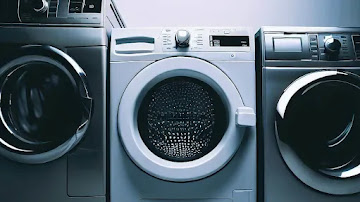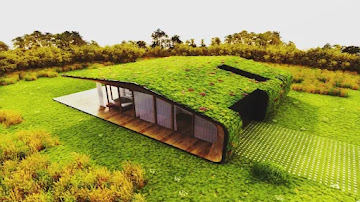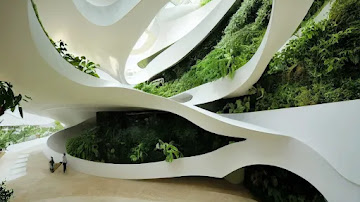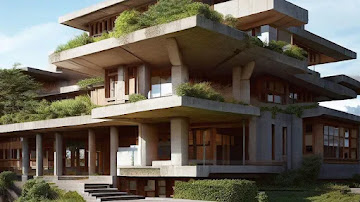Have you ever seen a wall with an incredible finish and wondered how to achieve that effect? Today I will tell you about a material that has been used for centuries and is capable of giving a unique touch to your spaces: stucco. In this article, we will answer the question "What is smooth finish stucco?", explore its different types, how it works in interiors and exteriors, and give you tips on how to apply it correctly.
Learn more about: Definition of architecture
What is stucco?
Stucco, or
white plaster mass, is a decorative coating used in construction to give a
smooth finish to walls and ceilings. It is composed of a mixture of lime, sand,
water, and sometimes cement, and is applied in several layers on a previously
prepared surface (gray work).
Stucco
finishes not only improve the appearance of spaces but also offer benefits such
as fire resistance and thermal and acoustic insulation. It is essential to
mention that this plaster facilitates execution times because its preparation
only consists of adding water little by little until a thick consistency is
achieved.
Stucco for exteriors
Its use in
exteriors is a variant of the traditional colored stucco used to embellish and
protect the facades of buildings. It is particularly resistant to weather
conditions, such as humidity and temperature changes, making it an ideal choice
for cladding buildings and homes.
The
application process for exterior stucco is similar to the traditional one, but
different materials are used in its composition to ensure greater durability
and resistance. For example, instead of lime, Portland cement is used,
which provides greater adherence and resistance to water.
Stucco in interiors
Stucco on interior walls is a versatile and durable option
for architecture and interior decoration. Its advantages in terms of strength,
customization, and insulation make it an attractive option for all types of
projects.
In addition, its ease of repair ensures that surfaces remain
in perfect condition for a long time. In interiors, it is mainly used to give
texture and an elegant look to walls and ceilings, as well as to protect them
from wear and tear, and, as if that were not enough, stucco is useful for
humidity.
Venetian Stucco
This is a finishing technique that originated in Venice,
Italy, during the Renaissance. It is characterized by its luxurious and glossy
appearance, which is achieved by adding marble powder to the stucco mixture and
applying several very thin coats with a special spatula.
It is ideal for interiors and is used in all types of
environments, from residential to commercial. In addition to its beauty, this
type of stucco also offers practical benefits, such as mold resistance and easy
cleanup.
Types
There are several types of decorative stuccos available in
the market, each with its characteristics and advantages. Here are the most
common ones:
Fine cement stucco.
- This is the most common and economical.
- It is composed mainly of cement, sand, and water.
- It is resistant to moisture and fire, which makes it ideal for exteriors.
- It can be applied in thin or thick coats, depending on the desired finish.
Lime stucco
- It is ancient and has been used for centuries in construction.
- It is composed of lime, sand, and water, which gives it a softer and more flexible texture than cement stucco.
- It is ideal for interiors, as it allows walls to breathe and helps prevent the formation of mold and mildew.
- Lime also has antibacterial and antifungal properties, making it perfect for damp areas such as bathrooms and kitchens.
Gypsum Stucco
- This decorative stucco is used primarily in interiors.
- It is composed of gypsum, sand, and water, which gives it a smooth, uniform finish.
- It is easy to apply and dries quickly, allowing for faster work.
- However, it is not as water resistant as the other types of stucco and can be easily damaged if exposed to moisture.
Acrylic Stucco
- It is a mixture of polymers and cement, which gives it greater flexibility and resistance to cracking.
- It is water and UV resistant, making it ideal for exteriors.
- It comes in a variety of colors and textures, allowing for greater customization.
- However, it can be more expensive than other types of stucco.
How to apply stucco correctly
Here are some tips on how to properly prepare stucco and achieve professional results:
- Surface Preparation: Before applying, make sure the surface is clean and free of dust, grease, and other contaminants. If necessary, repair any imperfections or cracks in the wall.
- Mixing: Prepare the mixture according to the manufacturer's instructions. Make sure the mixture is the right consistency, neither too thick nor too thin.
- Application: Start by applying a thin layer on the surface with a trowel or spatula. Allow this layer to dry before applying the next layer. Repeat this process until the desired thickness and finish is achieved. For Venetian stucco, it is important to apply very thin coats and polish each one with a spatula to achieve the characteristic shiny effect.
- Drying: Drying is a slow and delicate process. Make sure that the temperature and humidity of the environment are adequate and avoid exposing the surface to direct sunlight or drafts.
- Finishing: Once the dark gray stucco is completely dry, you can apply a coat of sealer or paint to protect it and enhance its beauty.
So far my report Joaquín, what I do owe you is the price of
stucco of 20 kg and 40 kg because depending on the brand and the place where
you are you will vary the cost of this material which continues to grow
exponentially. Greetings and have a great life. If you like it you can help us
to share and all that stuff. Bye.










